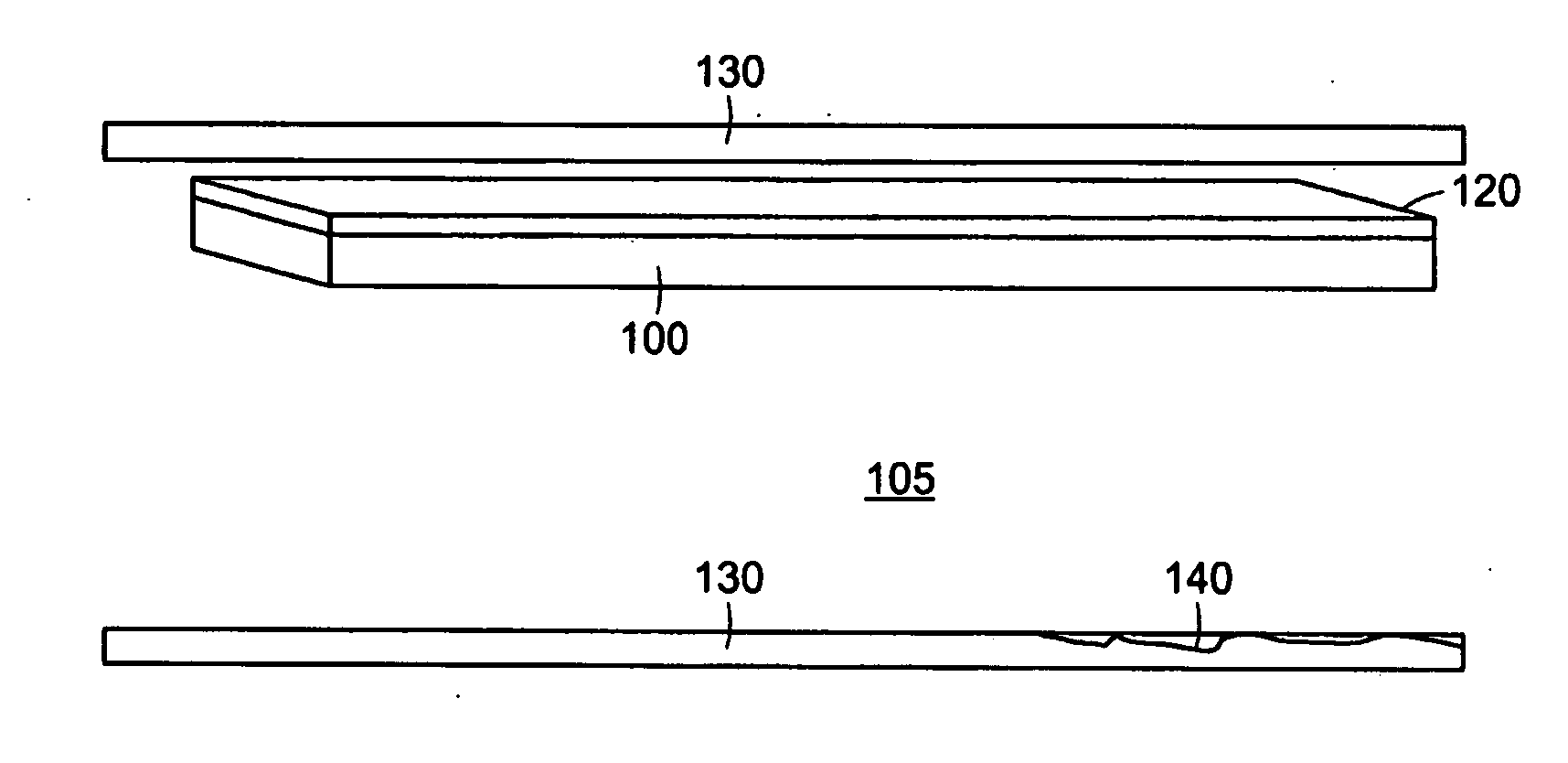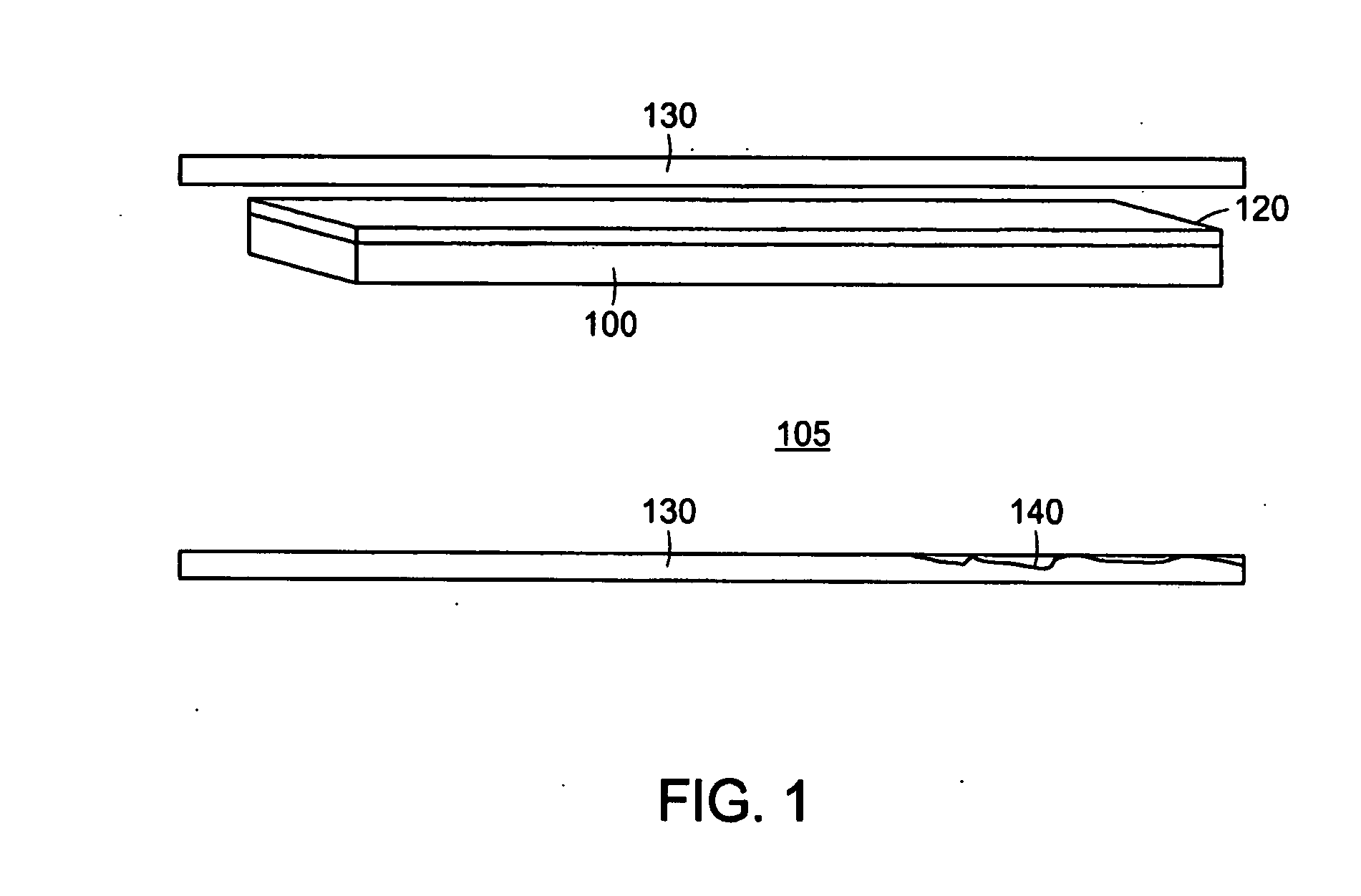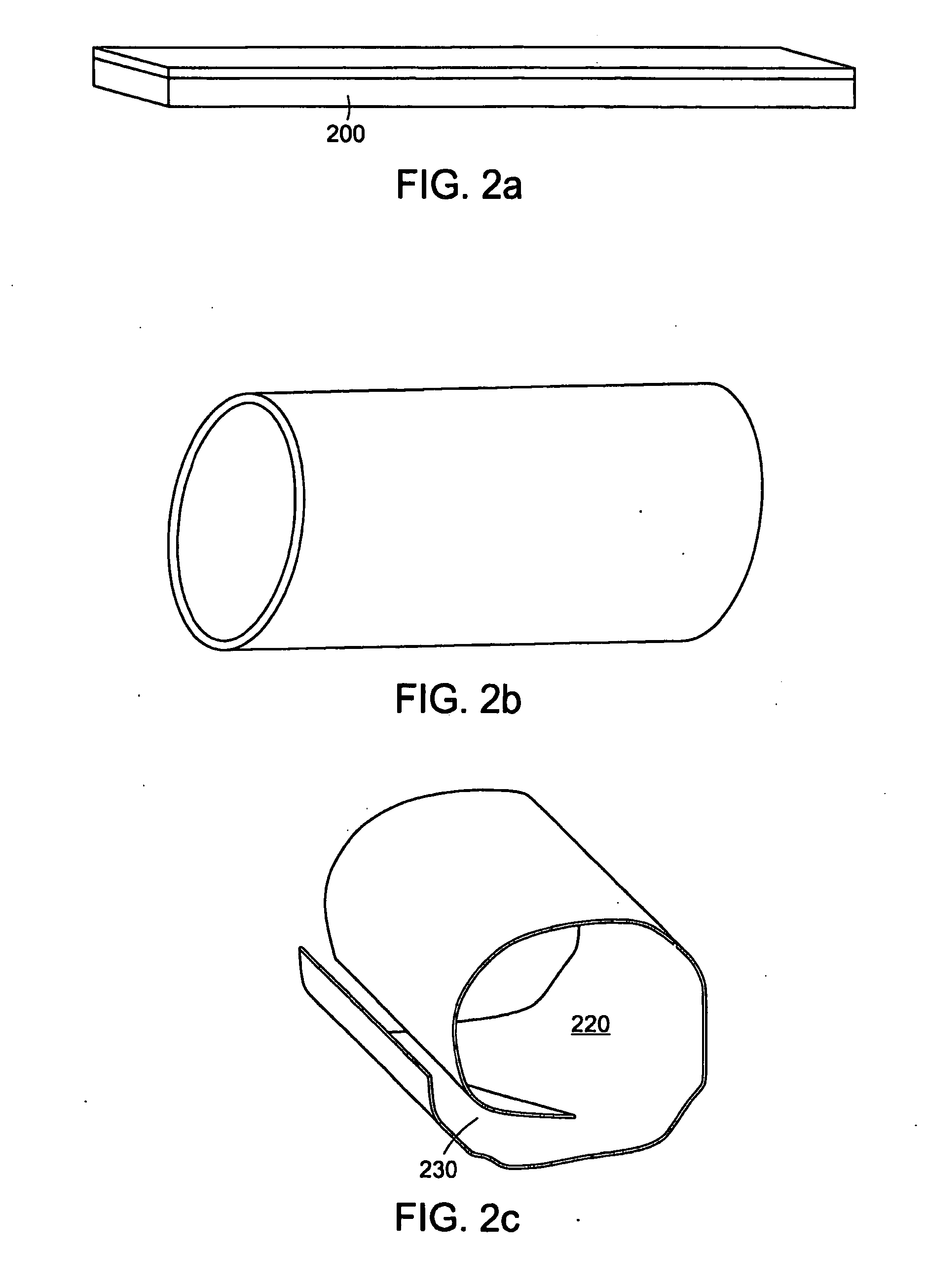Photochemical tissue bonding
a tissue bonding and photochemical technology, applied in the field of photochemical tissue bonding, can solve the problems of unnatural response of the host to foreign material, undesirable characteristics of the stent device described above, and impair the natural biological function of the luminal anatomic structur
- Summary
- Abstract
- Description
- Claims
- Application Information
AI Technical Summary
Benefits of technology
Problems solved by technology
Method used
Image
Examples
example 1
Photoactivatable Biological Membrane (PAM) Device
[0102]FIG. 1 depicts a small portion of an exemplary PAM device. The exemplary PAM device comprises a biological membrane 100, such as an amniotic membrane, which may be taken from the amnion of an animal, such as cow, pig, sheep, or the like, or alternatively in an exemplary embodiment from a human pregnancy, post-partum. The biologic membrane is constructed through synthetic chemistry means. In a preferred embodiment the biological membrane contains an epithelial surface, basement membrane, and connective tissue layers. The biological membrane, which in certain examples can preferably be an amniotic membrane, is coated or comprised there through of a photoactivatable dye 120. In certain preferred embodiments the dye is Rose Bengal. Alternatively, other photoactivatable dyes, including riboflavin-5-phosphate and methylene blue may be used. Photoactivatable dyes Rose Bengal, riboflavin-5-phosphate and methylene blue are typically acti...
example 2
Configuring the Exemplary PAM Device
[0105]FIG. 2 is a diagram of different exemplary PAM device configurations. These exemplary configurations can comprise different topologies of the PAM device that are formed prior to deployment, during, or after deployment to conform to and / or alter the topology of the luminal anatomic structure. FIG. 2a depicts an exemplary PAM device configuration that comprises a sheet of PAM 200. This configuration in one exemplary embodiment can be appropriate for imparting stability to one portion of the luminal anatomical structure. In another embodiment this topology may be used to repair a defect in at least one portion of the luminal anatomic structure. In yet another exemplary embodiment, this configuration may be used to treat, repair, or cover only the portion of the luminal anatomic structure that requires alteration while leaving the remainder of the luminal anatomic structure intact. FIG. 2b depicts another exemplary PAM device configuration where...
example 3
Modifying the Luminal Surface for the PAM Device
[0108]One aspect of the exemplary PAM device is that when it is deployed, it may be prevented or limited to further substantially move within, across, or along the luminal surface of the luminal anatomic structure. In part, motion is prohibited by the affixation characteristics of the photoactivatable dye. Affixation characteristics of the PAM device
[0109]with respect to the luminal surface of the luminal anatomic structure may be further enhanced by a modification of the luminal surface. In one exemplary embodiment, this may be accomplished by at least one of partially scraping or abrading the epithelial or endothelial cell layer of the luminal surface of the luminal anatomic structure 140. In another exemplary embodiment, the way for enhancing the anchoring properties of the PAM device include further enhancing the PAM device so that the edges of said PAM device become further affixed to the anatomic luminal structure. In one exempla...
PUM
 Login to View More
Login to View More Abstract
Description
Claims
Application Information
 Login to View More
Login to View More - R&D
- Intellectual Property
- Life Sciences
- Materials
- Tech Scout
- Unparalleled Data Quality
- Higher Quality Content
- 60% Fewer Hallucinations
Browse by: Latest US Patents, China's latest patents, Technical Efficacy Thesaurus, Application Domain, Technology Topic, Popular Technical Reports.
© 2025 PatSnap. All rights reserved.Legal|Privacy policy|Modern Slavery Act Transparency Statement|Sitemap|About US| Contact US: help@patsnap.com



